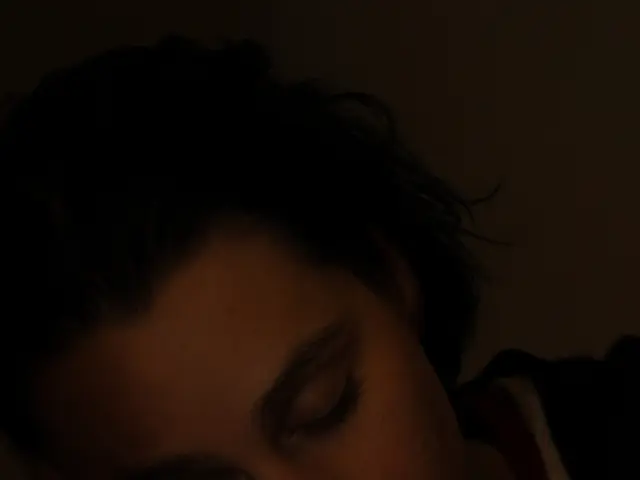Avoid Sufferings from Persistent Foot Cramps Impacting Your Lifestyle
Foot cramps, a common annoyance
Foot cramps can halt you in your tracks at any moment, just as pesky as leg cramps, and they can reoccur again and again depending on the cause. Here's the lowdown on why your tootsies might be giving you grief.
Cleveland Clinic, as a non-profit academic medical center, provides advertising on our site that helps support our mission. We don't endorse non-Cleveland Clinic products or services. Policy
Dr. Caitlin Lewis, a sports medicine specialist, shares her insights: "Foot cramps are more prevalent as we age. While uncomfortable, they're typically harmless."
What triggers foot cramps?
Foot cramps result from involuntary muscle spasms in your feet, unlike other types of foot pain. Frequent occurrences could mean there's a hidden cause underlying.
These are seven common reasons culprits for foot cramps:
- Inappropriate footwear
- Tight or ill-fitting shoes can squeeze your feet, potentially causing discomfort and cramping. Opt for footwear that provides ample arch support and space for toes to move freely.
- Poor circulation
- Inadequate blood flow can lead to cramping or numbness in the feet. If you have heart problems or are on medication, consult your healthcare provider if circulation issues persist.
- Dehydration
- Lack of fluids can cause muscle spasms and electrolyte imbalances, which can result in cramps[1][3][5]. Ensure proper hydration is a priority.
- Excessive exercise
- Overexertion can cause muscle fatigue and foot cramps. Be mindful of the intensity of your exercise routine and always warm up and cool down properly, incorporating stretching exercises.
- Nutrient deficiencies
- Insufficient intake of essential minerals like calcium, sodium, potassium, and magnesium can cause muscle cramps[5]. Fill your diet with a variety of nutrient-rich foods.
- Medications' side effects
- Some medications like statins and diuretics can cause muscle cramps[1]. Check with your healthcare provider if you notice new cramps after starting a new medication.
- Flat feet
- Those with little to no arch can experience chronic foot cramps[5]. Stretching exercises or sole inserts might help alleviate this issue.
Easing the pain and finding long-term solutions
When dealing with foot cramps, the following strategies can provide encouragement and lasting relief:
- Home remedies for relief
- Use over-the-counter pain relief creams and medications like ibuprofen or naproxen sodium for quick relief. Try an Epsom salt bath, warm compress or heating pad, keeping hydrated, massage, or standing on the affected foot for comfort[2].
- Better shoes
- Seek out footwear with arch support and plenty of room for movement, minimizing the risk of chafing and blistering[5].
- Improved flexibility
- Increasing your flexibility can help relieve pain and cramps. Do regular flexibility exercises and stretching, using resistance bands if needed[4].
- Healthy nutrition
- Fuel your body with a well-balanced diet, focusing on various colorful foods to foster overall health and wellness[4].
- Consult a healthcare professional
- If foot cramps are frequent, persistent, or severe, consult a healthcare provider to investigate potential underlying issues[2].
[1] Mayo Clinic. Foot cramps. https://www.mayoclinic.org/symptoms/foot-cramps/basics/causes/sym-20050777[2] Healthline. Why do I get menstrual cramps in my feet? https://www.healthline.com/health/pain/menstrual-cramps-in-feet[3] Verywell Health. Dehydration: Symptoms, Causes, and Treatment. https://www.verywellhealth.com/what-is-dehydration-3120197[4] ACE Fitness. What are flexibility exercises and why are they important? https://www.acefitness.org/education-and-resources/professional/prosource/what-are-flexibility-exercises-and-why-are-they-important/[5] American Family Physician. Nocturnal Foot Cramps. https://www.aafp.org/afp/2009/0901/p707.html
Foot cramps can be triggered by various factors, including inappropriate footwear, poor circulation, dehydration, excessive exercise, nutrient deficiencies, medications' side effects, and flat feet. To ease the pain and find long-term solutions, consider home remedies like over-the-counter pain relief creams or an Epsom salt bath, seeking out footwear with proper arch support and room for movement, improving flexibility through regular exercise, focusing on a healthy, nutrient-rich diet, and consulting a healthcare professional if cramps are persistent. The science behind foot cramps and their medical-conditions is continually evolving, and staying informed through health-and-wellness resources can help manage these pesky issues.







